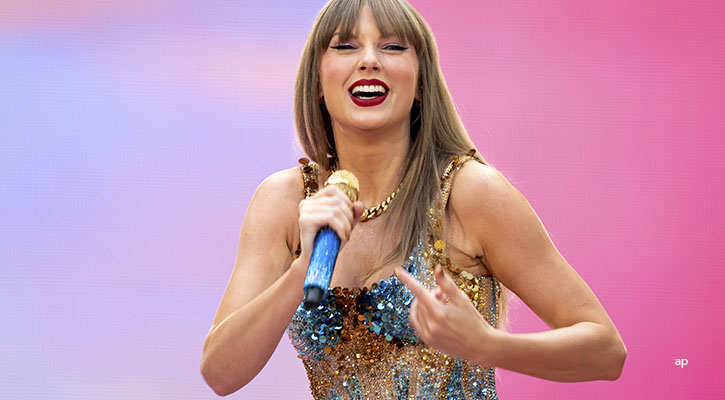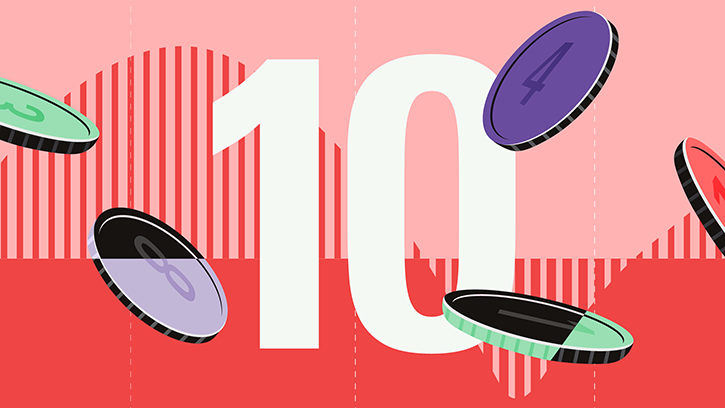
UK inflation remained at 2% last month, the Office for National Statistics confirmed today. Events such as the Taylor Swift Eras tour in June and the European Championship helped keep prices artificially high and slightly above consensus forecasts.
While the Consumer Price Index (CPI) is exactly at the Bank of England's (BoE) 2% target, services inflation and core inflation remained higher than forecast in June, casting doubt on the timing of the first interest rate cut.
Core CPI, which excludes more volatile energy and food prices, was forecast to fall to 3.4% in June but remained at 3.5%, the same as in May.
Policymakers are more concerned about core CPI because it's falling more slowly than the headline rate of inflation and is also higher than that measure.
Services inflation is also a worry for the BoE, remaining at 5.7% last month. The lack of movement in both the core and services number now makes an August 1 rate cut less likely, economists say. This is a change from the UK's last inflation print, when headline CPI hit target and financial markets increased the odds of an August cut, as indicated by futures trading.
However, Michael Field, European market strategist at Morningstar, says the situation is not perilous.
"UK inflation rose by 2% year over year in June. This is a slight rise month over month, but nothing to get excited about," he says.
"This level stands bang in-line with the Bank of England’s 2% targeted rate, increasing the pressure on central bankers to cut interest rates at next month's meeting.
"The counter to this argument, however, is that the UK's 4.4% unemployment rate, which is certainly low by historical standards, is loosening from its nadir of 3.6% just two years ago.
"Over time, savings in input costs should also flow into reduced services costs, meaning with any luck services inflation should also decline."
When Will The Bank of England Cut Rates?
Economists point to some one-off factors for June that had an impact on consumer prices.
For one, Taylor Swift's blockbuster Eras tour is expected to have pushed up hotel and restaurant prices, and especially in London, while a Summer of football has led to greater spending on alcohol and fast food. Services in general saw higher demand and higher prices, including holidays, cinema, theatres, concerts and haircuts. This trend has been noticeable since the end of the pandemic as Britons prioritise experiences despite the cost of living.
Simultaneously, unseasonably wet weather forced clothes retailers to discount summer clothes last month, leading to a fall in the clothing element of CPI. Food prices rose year-on-year, but at a much more modest rate.
Wage and employment data due tomorrow (July 18) will also likely suggest to the BoE that inflationary pressures are still embedded in the economy. Julian Howard, chief multi-asset investment strategist, at GAM Investments, thinks the narrative of a summer rate cut may have been blown off course.
"This latest inflation print is unlikely to be as helpful for the BoE as many would have expected," he says.
"Headline inflation is at – but not below – target and is clearly vulnerable to a pop above target again in the coming months. For both the Federal Reserve and BoE now, the inflation course is just not the clear signal to action that it once was."
Who Wants a Rate Cut?
At the last Bank of England meeting, seven MPC members voted for a hold versus two voting for a cut. Those in the hold camp wanted to see "more evidence of diminishing inflation persistence […] before reducing the degree of monetary policy restrictiveness." The Bank itself is predicting a rise in CPI back to 2.5% towards the end of the year.
The lack of change in the headline CPI number belies the changes in the wider economy since the last inflation print was released on June 19. A new UK government took control on July 5 after 14 years of Conservative rule.
With a massive majority, the new Starmer administration has a substantial mandate to implement a range of new fiscal measures. GDP for May was stronger-than-expected at 0.9% and sterling has gained against major currencies, helped by the end of political uncertainty. Whether this trajectory will continue remains to be seen.
UK Interest Rates Are the Highest in Europe
Even though CPI is at 2%, the Bank of England's interest rate is at 5.25%, a rate that's held since August 2023. The Bank is now out of step with other European central banks, which have cut borrowing costs this year, including the Swiss National Bank, the Swedish Riksbank and the European Central Bank.




























